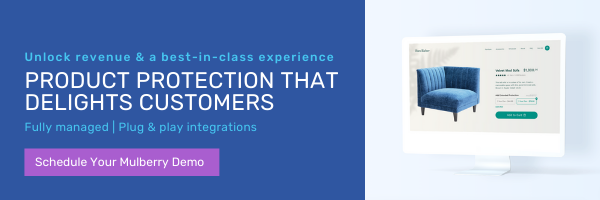Ecommerce is the king of convenience for shoppers. But it does come with an added level of risk.
Too often, what customers receive isn’t what they expect. Sometimes that’s to an extreme, where customers post hilarious online shopping fails when they get something completely different from what they ordered (or thought they ordered).
While most purchases are a lot closer to the target, these posts go viral because the overall experience is relatable: sometimes online purchases disappoint. With examples of viral shopping mistakes, it makes sense that customers are cautious. Representing your brand as trustworthy requires you to be proactive.
Here’s what you need to know about the role of brand trust in ecommerce and what makes the difference for customers.
Brand Trust: Why It Matters in Ecommerce
Brand trust is key for all shopping experiences, but within ecommerce, this is especially significant. Without in-person shopping, there are additional customer fears that come from not having the benefit of applying their senses. Top concerns include that the product that arrives won’t be the same as it was represented online, or that they won’t like it and will be stuck with it.
Brand trust gains customers
Throughout their customer journey, consumers look for evidence that they can trust the brand. They will look for assurances up to their point of purchase that indicate trustworthiness. Including these can be the difference between a customer abandoning their cart or clicking submit on the order.
Brand trust retains customers
Even after their purchase, customers continue to look for evidence that they can trust the brand. A study found that 67% of customers feel that they need to come to trust the company behind a purchased product in order to keep buying it.
Brand Trust Dealbreakers, According to Customers
A 2018 study found that 81% of US customers and 71% of Canadian customers report that they lose trust in a brand when they have a poor experience with the product. Close behind that, 78% of US customers and 70% of Canadian customers say that a poor customer service experience can be a dealbreaker for them that means lost trust in a company.
Chances are, if you’re like most customers, you’ve experienced this firsthand. You order a product online and experience a disappointment. When trying to correct it, calling customer service ends up being a stressful and unproductive ordeal. Your trust is lost both with a poor product experience and a substandard customer service experience.
A comprehensive extended service plan can confront both of these dealbreakers head on.
What Warranties Communicate About Brand Trustworthiness
Brand trust is particularly crucial when customers are making decisions about higher end items. If they’re spending the money, they want to ensure they’re not wasting it on a substandard product. Especially when making purchases of that scale, customers want warranties, and offering protection such as unlimited drops and spills coverage is a key way to help the customer know that your brand can be trusted.
There are several types of warranties that are offered on products, and each send a different message.
Manufacturer Warranties: We Stand Behind Our Product
Manufacturer warranties help confront the first dealbreaker about quality of product experience. Manufacturer warranties tell customers that your brand wants them to have a positive product experience, and that if they don’t, the brand will replace it.
Offers like manufacturer warranties, free returns, or a 100-day test period assure customers that your brand wants them to have a positive brand experience. Even without the ability to test quality in person, customers will get a chance to see if their item is flawed.
Manufacturer warranties often include a limited timeframe and coverage of defects from the manufacturing process. These manufacturer warranties are an expected offer for customers. They say to the customer that the company stands behind their products from factory errors.
Extended Warranties: We Stand Behind Our Customers
Brands who want to go a step further will offer an extended service plan. In addition to the assurance that your brand stands behind your products, extended warranties send the message that you stand behind your customers.
Plans that extend manufacturer warranties show the customer that you want to back them up even if they find a flaw beyond the standard manufacturer warranty, or if wear and tear gives the product a shorter than hoped for life length.
Plans that include accidental damage communicate to a customer that the company understands them. Life gets complicated and messy in ways that are difficult to predict and protect against. While you buy a product, you actually want to use it, and extended warranties show that companies want customers to live their life with the product.
If a customer does need to file a claim, their claims experience is another important customer journey point. A positive customer service experience when filing a claim helps confront the second dealbreaker. With a customer-first extended warranty service, customers can maintain the brand trust that will keep them coming back.
Build Trust in Your Brand
Building trust in your brand comes not only from avoiding deal breakers but also from proactively showing customers that they can trust you throughout their customer journey. Extended warranties associate your brand with consumer empathy. Customers who see that extended product protection get this message: they care, I can trust them.
Brand trust means that more customers complete their purchases and come back. That brand trust breeds brand loyalty. Customers are looking for evidence that they can trust your brand, so make it easy for them to find that throughout their journey. re
re




